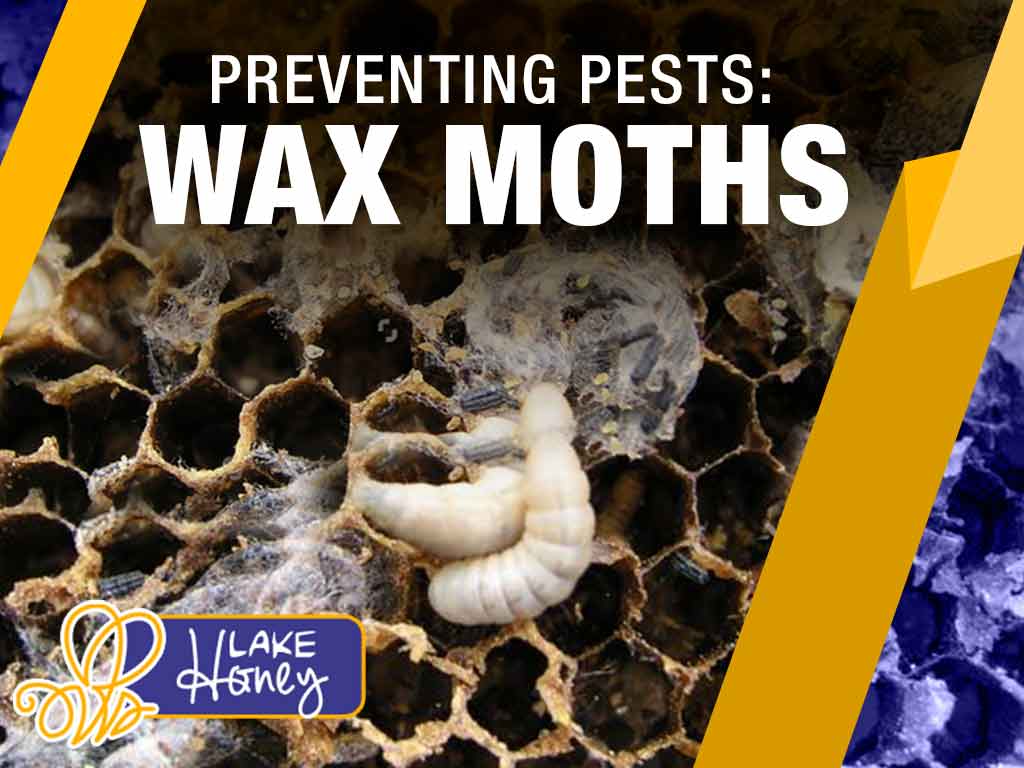As a beekeeper, you must be vigilant in protecting your hives from pests, predators, and parasites that could invade the colony. Once an invader does get in, it can be difficult to control. Some pests, including the Wax Moth, can cause harm not only to your bee population, but to your bottom line, as well.
What are Wax Moths?
Sometimes raised as food for animals such as lizards and birds, wax moths actually threaten the bee population. While to you these moths may not look different than any other moth, wax moths are drawn to beehive odors, and often sneak in at night. There are two types of wax moths you must be cautious of when inspecting your beehives.
- Greater Wax Moths are known to carry parasites to hives and the bees who inhabit them. Greater Wax Moths are able to cause enough damage to the hive to make an economic impact to beekeepers, which is why several control methods have been developed to get rid of them.
- Lesser Wax Moths are known for eating empty honeybee combs. These moths can also tunnel under cells of the honeycomb, causing the caps to become defective.
In appearance, adult wax moths are pale brown to grey in color. The larvae are a creamy white but turn grey once they are fully developed. Once a moth is in the hive, the female will lay eggs, which then hatch inside the comb as larvae. One obvious indication that wax moths have somehow managed to get into your hives, is a white silk path left by the larvae. In extreme cases, wax moth larvae can destroy an entire comb. But the damage does not end there.
What threats do Wax Moths pose to bees?
While a healthy colony of bees can typically defend itself against pests, a compromised one is susceptible to major damage. For this reason, it is vital that beekeepers do everything they can to ensure their bees have everything they need to survive. Some of the was a wax moth can damage a hive include:
- Beehives: Once wax moths invade a hive; they are hard to control. In hive without a queen, or with dwindling numbers, the bees cannot effectively guard their hive against infestation. At the beginning, wax moths will only attack unoccupied combs. As the colony weakens further, the wax moths may begin to attack combs that contain bees.
- Bald Brood: Wax Moths can also cause a condition known as bald brood, which happens when the capping over pupal bees has been removed. Once the brood is damaged, workers bees remove the remainder of the cap and fully expose the pupae which continue to develop. However, this condition often results in deformities in the bees’ legs or wings.
- Galleriasis: While rare, wax moths can sometimes trap newly formed adult bees inside their cells before they are able to emerge. When this happens, the trapped bees eventually die and are removed by hive bees.
- Stored Combs & Hive Materials: Believe it or not, the wax moth can render a comb useless in about a week. You will likely inspect your combs before storing them. However, even if you do not see adult wax moths, there could be eggs waiting to hatch. During the colder months you may not have issues. Adults moths could also lay eggs in exposed cracks and joints of the hive. Once hatched, these larvae will quickly make their way inside the honeycomb.
How do I protect my hives from Was Moths?
An invasion of wax moths can happen in a short amount of time. Once they have infested one hive, they may spread to the next. Before you know, your entire apiary could be compromised. That is why prevention is key in keeping out pests like wax moths. There are several things a beekeeper can do to ensure their bees are safe.
- Maintain a strong, healthy honeybee colony. It might sound obvious, but the best defense against pests is having a strong hive. Ensure that your population of bees is adequate for guarding against wax moths. If there is too much space to guard, remove one of your boxes so that there is just enough for your bees to cover.
- Use bottom entrances. One way to keep wax moths out of your hives, is to switch up entrances. Experts say that hives with entrances and holes in the upper areas are prone to infestation. By sealing off those entrances, or at least screening them off, you can keep wax moths from entering the hive.
- Set traps. By mimicking the smells of a beehive, beekeepers can lure wax moths into traps. Once inside, the wax moths are unable to get out and typically drown. Traps are effective ways of keeping wax moths out of hives and stored honey supers.
- Freeze & rotate beehive frames. In extremely cold temperatures, wax moths are basically inactive, and extremely cold temperatures can be deadly to the larvae and eggs. Freezing frames before storing them and placing them in moth-proof bags is a great way to protect your hives from wax moths. Beekeepers should also consider keeping extra frames around that can be rotated into the hive.
- Plant mint near your apiary. Another defense you have against wax moths is mint. These insects are repelled by it. Planting a few mint plants near your beehives will keep moths away from the area. You can also leave mint branches near your stored boxes to keep away wax moths.
Getting help
If you are inexperienced with this type of problem, your local beekeeping community is a great resource. Most new beekeepers find it very beneficial to learn from the experience of others who may be dealing with similar issues. You can join a local beekeeping club or find one online to stay connected with other bee enthusiasts.

